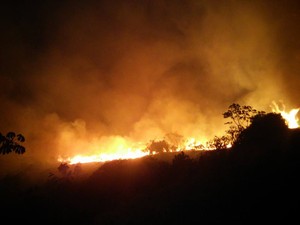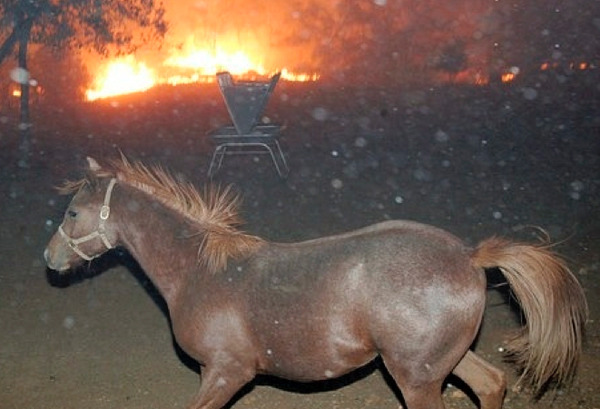On August 30, 2015, Semião Fernandes Vilhalva, an indigenous leader of the Guarani-Kaiowá tribe, was killed in the town of Antonio João, which is 402 miles from Campo Grande, the capital of Brazil’s state of Mato Grosso do Sul (MS). The state is in the west of Brazil, on the border of Paraguay and Bolivia.
The murdered indigenous leader, Semião Fernandes Vilhalva, at the time was involved in mobilizing a lands reoccupation. He “actively participated in efforts undertaken for the recognition of indigenous territories and the recognition of the lands of the Guarani-Kaiowá people,”
according to the Observatory for the Protection of Human Rights Defenders.
Vilhalva’s murder is part of a chain of such murders of indigenous leaders. Pierce Nahigyan of Planet Keepers describes Ambrósio Vilhalva and Marinalva Manoel, both Guarani-Kaiowá leaders:
Ambrósio Vilhalva was a Guarani leader who spent decades campaigning against the planting of sugar cane on his tribe’s former lands. Vilhalva starred in the award-winning film Birdwatchers and traveled the world to speak about the Brazilian government’s failure to protect native Guarani land. In December 2013, after months of death threats, Vilhalva was found dead in his hut from multiple stab wounds. See video on Ambrósio Vilhalva, murdered Guarani leader
Marinalva Manoel was also a leading figure in the Guarani Indian repatriation movement. In November 2014, she was found dead on the side of a highway after being raped and stabbed to death. Read article on Guarani murdered leader Marinalva Manoel
And the list of murdered Guarani leaders goes on. Hermano de Melo, in a Sept. 13, 2015 article on the Brazilian site
Environmental Racism, continues the lamentable list. De Melo alleges that there is a pattern of murders associated with reoccupation of lands. In a reoccupation of the Terra Indígena Buriti (Buriti Indigenous Territory), Oziel Gabriel, 35, murdered in Sidrolândia (Mato Grosso do Sul) in May 2013. The Guarani-Kaiowá Chief, Nísio Gomes, was murdered in the Guaiviry encampment, in Aral Moreira, MS, on the border that Brazil shares with Paraguay on Nov. 18, 2011.
It would be difficult to avoid the conclusion that the local ranchers regard it as a legitimate strategy to systematically murder the Guarani-Kaiowá leaders as a way of stamping out land disputes over ratified lands.
In 2005, the Brazilian government indeed ratified 10,000 hectares as the possession of the Guarani-Kaiowá. Yet local ranchers petitioned to have this decision overturned. As a result, the 2005 possession was never transferred. Instead, 9,317 of these hectares were divided into nine ranches, which were given into the possession of local ranchers, who now own the land, and are reluctant to give it up. The ranchers hear “reoccupation” but call it the “invasion” of indigenous people.
The remaining 150 hectares, which amounts to just .58 of a square mile, are all that the Guarani-Kaiowá have had to live on. They live in such a state of overcrowding that malnutrition, illness, and suicide have abounded. As a result, some members have squeezed onto the edge of local highways to live—as you can imagine, a precarious and dangerous situation. According to the NGO CIMI,
cited in an article by Planet Keepers, 72 Guarani-Kaiowá committed suicide in 2013, “equivalent to 232 deaths per 100,000, a rate ‘that has nearly tripled over the last two decades,’ says Survival International.”
And thus, on August 30, 2015, after decades of inaction by the Brazilian government to enforce the 2005 legal demarcation of the Guarani-Kaiowá territory, Semião Vilhalva and other people of the Guarani-Kaiowá tribe were engaged in a reoccupation of the lands that had been legally deeded to them in 2005. In the town of Antonio João, people of the Guarani-Kaiowá tribe mobilized to reoccupy the lands that the Brazilian government had ratified for them—-those 10,000 hectares.
In response to the indigenous reoccupation of 4 ranches deeded to them in 2005, on Aug. 30, 2015, "about 100 people in trucks approached the Barra and Fronteira ranches, in the town of Antônio João, in order to retake the area which they view as having been invaded by the indigenous peoples,"
according to the newspaper Correio do Estado, which is based in and covers news based in Mato Grosso do Sul.
As the ranchers and the indigenous gathered on the disputed lands were facing off, Vilhalva, 24 years old, was searching for his 4 year old son in the crowd. He was standing on one side of a stream when, from the other side of the stream, according to the indigenous account, a gunman hired by the ranchers fired a 22 caliber revolver. The bullet hit Vilhalva's face, then exited his neck. Vilhava never found his son. As for the ranchers' account, the ranchers claim, improbably, that Vilhalva had died earlier that week and his body had only been transported to the area, and they claim it had already begun to show rigor mortis.
However, the police report negated this fabrication, finding no rigor mortis on the date of the confrontation, and citing the date of death as Aug. 30. On Sept. 2, Semião was buried, attended by mourners, including his wife.
Not one person from the town who wasn’t indigenous attended the funeral, an indication of how far the two communities are from understanding one another. The climate between them is hostile, and it looks like the Federal Police are biased;
Midiamax, a local newspaper, reported that the Federal Police were giving an escort for ranchers to deliver food, while the indigenous in the face-off went without escort and thus were going hungry.
Though the Federal Police have come to the area, the attacks against the indigenous have continued. According to the Observatory for the Protection of Human Rights Defenders,
more attacks have occurred:
Attacks against the Guarani-Kaiowás continue even after the killing of Mr. Semião Fernandes Vilhalva. The Nanderu Marangatu territory was attacked again on August 30 by 60 gunmen, who entered the land shooting against children, elderly people, women and indigenous men. On September 3, 4 and 5, another Guarani-Kaiowá territory was targeted by the farmers, Guyra Kamby’I, which was attacked with fire conflagration and gun shooting.
In the photo above,
leaders from 6 indigenous peoples gathered in protest of the murder of Vilhalva (Guarani-kaiowá, Terena, Munduruku, Baré, kambeba e Baniwa). Their sign reads: "We are not invaders. We're taking back what is ours!"
The Guarani-Kaiowá need long term legal protection. The Brazilian Government needs to protect their territory—those 10,000 hectares that need to be legally demarcated, again as in 2005. At this writing, the Guarani are in an unsustainable situation, and
lies are being circulated by and in the media to justify the attack against Vilhalva and the Guarani.
The Observatory for the Protection of Human Rights Defenders urges the following actions to pressure Brazilian authorities to act to protect the Guarani-Kaiowá in this increasingly hostile situation:
Actions requested:
Please write to the authorities in Brazil, urging them to:
i. Carry out an immediate, thorough, impartial and transparent investigation into the above-mentioned events in order to identify all those responsible, bring them before an independent tribunal, and sanction them as provided by the law;
ii. Move forward in the processes of Guarani-Kaiowá land demarcation, as delays in the finalization of such processes results in legal uncertainty and insecurity regarding land ownership and foster increased violence in land dispute;
iii. Guarantee in all circumstances the physical and psychological integrity of all human rights defenders in Brazil, including in particular land rights defenders;
iv. Conform to the provisions of the UN Declaration on Human Rights Defenders, adopted by the General Assembly of the United Nations on December 9, 1998
Addresses:
• H.E. Ms. Dilma Rousseff, President of the Federative Republic of Brazil, Palácio do Planalto, Praça dos Três Poderes, 70150-900, Brasilia DF, Brazil.
• Mr. Gilberto José Spier Vargas, Secretary for Human Rights, Secretariat for Human Rights of the Presidency of the Republic, Setor Comercial Sul - B, Quadra 9, Lote C, Edificio Parque Cidade Corporate, Torre A, 10º andar, Brasília, Distrito Federal, Brasil - CEP: 70308-200. Email: direitoshumanos@sdh.gov.br; snpddh@sdh.gov.br. Twitter: @DHumanosBrasil
• Ms. Izabella Mônica Vieira Teixeira, State Minister of the Environment, Ministry of the Environment, Esplanada dos Ministérios - Bloco B, CEP 70068-900 - Brasília/DF, Brazil. FAX: 2028-1756. Email: gm@mma.gov.br Twitter: @mmeioambiente
• Mr. João Pedro Gonçalves da Costa, President of the Indian National Foundation (FUNAI), SBS, Quadra 02, Lote 14, Ed. Cleto Meireles, CEP 70.070-120 – Brasília/DF, Brazil, Email: presidencia@funai.gov.br.
• H.E. Ms. Regina Maria Cordeiro Dunlop, Ambassador, Permanent Mission of Brazil to the United Nations in Geneva, Chemin Louis-Dunant 15 (6th Floor), 1202 Geneva, Switzerland. Fax: +41 22 910 07 51, Email: delbrasgen@itamaraty.gov.br
• H.E. Mr. André Mattoso Maia Amado, Ambassador, Embassy of Brazil in Brussels, Avenue Louise, 350 B-1050, 1050 Brussels, Belgium. Fax: +32 2 640 81 34, Email: brasbruxelas@beon.be
Please also write to the embassy of Brazil.
Click here to find the email of the Brazil embassy closest to you
Watch BBC Video on the Murder of Semião Fernandes Vilhalva






















